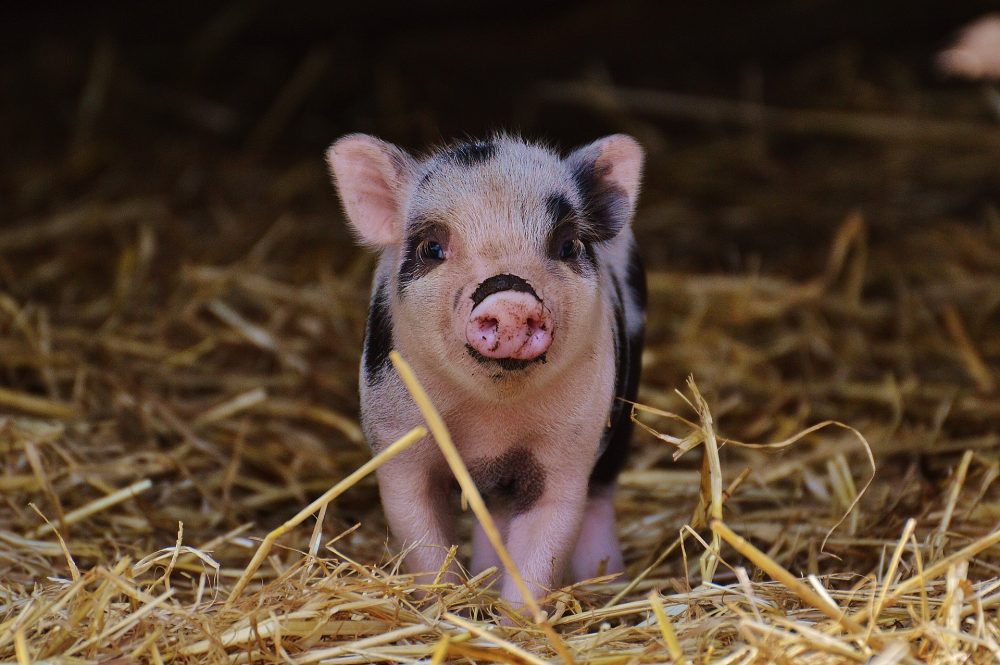Porcine Reproductive and Respiratory Syndrome (PRRS) is one of the biggest health concerns for the swine industry. The disease is caused by a virus (PRRSV) that impairs reproductive function and causes respiratory disease. Originally a relatively rare disease when it was first identified in the 1980s, PRRS has become a worldwide concern. In the U.S. alone, PRRS causes an estimated $660 million in losses each year.
One of the biggest challenges is that PRRSV is very hard to control – the virus is constantly mutating and giving rise to new strains and variants, thwarting vaccination efforts. UConn researchers have identified a promising avenue to address this challenge, borrowing lessons from HIV research.
Professor of virology in the College of Agriculture, Health and Natural Resources Antonio Garmendia has received a $500,000 grant from the USDA’s National Institute of Food and Agriculture to test a mosaic approach to protect swine from PRRS. Paulo Verardi, associate professor of virology and vaccinology and Herbert Van Kruiningen, professor emeritus of pathology, both in UConn’s Department of Pathobiology and Veterinary Science, are Co-PIs on this grant.
This “mosaic” approach was initially presented as a method for HIV vaccine development. HIV presents many of the same challenges as PRRSV due to their hypervariability. Mosaic vaccines combine proteins from multiple strains of a virus into a single vaccine. This prompts an immune response to all these strains at once and thus, theoretically, offers an effective and broader protection.
Garmendia and Verardi recently successfully tested the mosaic vaccine technology’s ability to cross protect swine against two divergent PRRSV strains. They will further this research and expand testing through this new grant.
The researchers will begin by generating sequences for PRRSV structural proteins using the Los Alamos National Laboratory’s Mosaic Vaccine Tool Suite. This tool allows users to generate protein sequences that induce a high proportion of protective immune responses against multiple strains.
The new vaccines will include several structural proteins from multiple strains of PRRSV. Structural proteins make up the capsule that surrounds the virus’ genetic material. One adaptation that viruses often take on to evade the immune system is changing their structure. This means antibodies, which use structural cues to identify the pathogen, cannot recognize the new variants and thus fail to neutralize the infection.
They will use plasmids and viral vectors filled with the mosaic PRRVS DNA. When the pig’s immune system recognizes the foreign PRRSV proteins expressed by the vaccine DNA, it will mount a response. If their immune cells encounter the actual PRRSV in the future, they will be able to remember it and quickly respond to prevent severe infection.
Garmendia and Verardi will combine multiple mosaic sequences to see which combination offers the greatest protection. The researchers predict that pigs inoculated with vaccines expressing multiple mosaic sequences will have greater protection against diverging variants with different structures.
To measure efficacy, the researchers will use blood tests before, during, and after vaccination to measure the immune response. They will also challenge the vaccinated animals by exposing them to the virus and taking blood, nasal swab, and tissue samples to determine the rate of viral replication and shedding, an indication of how well vaccines protect pigs from disease.
After determining the best candidates for inclusion in the mosaic vaccine, Garmendia and Verardi plan to work with an industrial partner to develop a commercial PRRS vaccine.
USDA- NIFA Grant 20216701634564
Follow UConn CAHNR on social media



